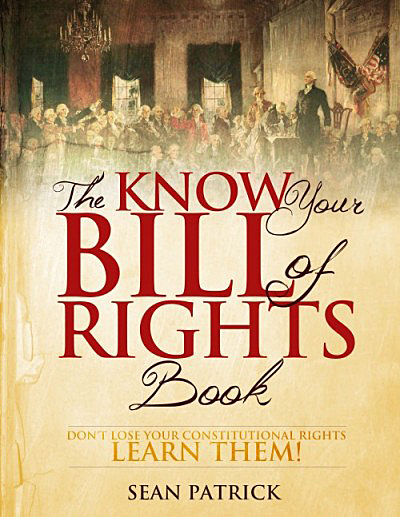OldSpeak
Book Review: The Know Your Bill of Rights Workbook
By Joe Sciabica
July 10, 2014
 The Know Your Bill of Rights Workbook, written by Sean Patrick, is designed to help students studying the first ten amendments of the Constitution to learn more about the history of their formation in addition to reasoning out why they are so important today.
The Know Your Bill of Rights Workbook, written by Sean Patrick, is designed to help students studying the first ten amendments of the Constitution to learn more about the history of their formation in addition to reasoning out why they are so important today.
It is a difficult challenge to go about trying to teach young students about the Bill of Rights, such little material, which has been intensely debated and examined by legal scholars and constitutional lawyers. The workbook sets out to introduce those rights in an unfiltered manner by having students reasoning out implications with just the base text available to them in various exercises (in addition to some historical background).
The foreword establishes the need for simplification by making the student aware of all the bias that surrounds current commentary on the Bill of Rights and the importance of word meaning that is used to make up the first ten amendments. Patrick confesses that his problem with other texts on the Constitution is how they “feed” interpretations to students without letting them make up their own mind.
However, as soon as the introduction, Patrick already begins to mold the context and the information which the student is learning and thus filters it. The biggest problem with the material is a “deification” of the founding fathers and those who wrote the amendments. The feeling behind the wording is a belief that the Bill of Rights and the values behind them are infallible. Patrick states “as you will see, the Bill of Rights is a triumphant proclamation of sacred truths upon which freedom depends.” This is quite a loaded statement that assumes the reader should already agree with the author about the basic premise of the Bill of Rights.
It is true that to properly address the issue of the complexity of the founding fathers and some of the conflicts between what they said and what they did is not the goal of this book. However, the author should mind that if something is going to be simplified in order for a new reader to reason their own conclusions, it should be more neutral in its presentation.
Once the books dives into the first ten amendments it does provide plenty of room for the student to reason out the meaning and implications of the amendments. There is a good combination of exercises that allow the student to apply the amendments in real life situations as well as some modest yet detailed historical background on the amendments to give the student some context on what the intentions of the founding fathers were.
At certain points, Patrick does give a balanced approach where he stresses the importance of the First Amendment but also acknowledges the limits of free speech and calls upon the reader to consider where that line should be. Expectedly, the Second Amendment chapter seems to be a little more one-sided where even though Patrick wants the student to consider the meaning of the Second Amendment on their own accord, he provides a premise that creates the context in which the student must think.
Finally, credit is due to Patrick where he breaks down the less known amendments that are a little more demanding regarding their need for analysis. This is especially true for the chapter on the Fifth Amendment and Ninth Amendment, which provides a thorough breakdown about the logic behind the amendments and why they are so important. The only shortfall in this regard is that Patrick should have given this same treatment to the Third, Sixth, Seventh and Tenth Amendments also which do not include information on their historical background (but do provide exercise sections).
Ultimately, The Know Your Bill of Rights Workbook is greatly outweighed in its benefits than its few shortfalls. Patrick is correct in the beginning of the book when he states that more of the burden should be on the student trying to figure out what the Bill of Rights really mean instead of just being told what they are by someone else’s interpretation. Although Patrick is not completely neutral in his setup of some of the basic premises of the Bill of Rights, his book comes so much further than many others that are trying to shape minds instead of letting them explore and analyze unfettered.
DISCLAIMER: THE VIEWS AND OPINIONS EXPRESSED IN OLDSPEAK
ARE NOT NECESSARILY THOSE OF THE RUTHERFORD INSTITUTE.


